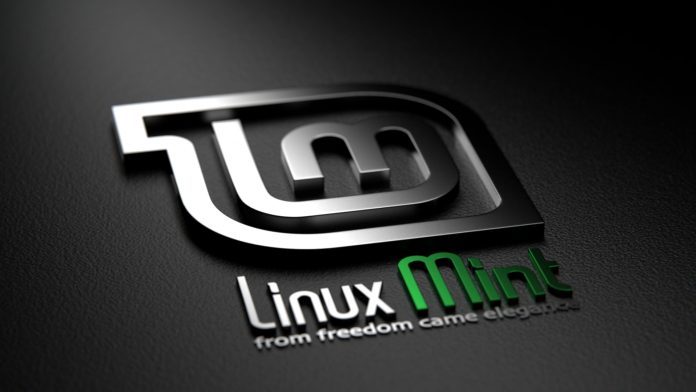Linux Mint was mainly developed and released by Clement Lefebvre in France in 2006. Clement is one of the software developers who are notoriously reluctant and reclusive to give interviews but at the same time, he has stressed repeatedly that he has an aim to modify Ubuntu and achieve elegance to it. Practically, that meant focusing on incorporating user feedback, ease of use, and also choosing pleasant color layouts and schemes.
Linux Mint is distribution based on the Debian and Ubuntu operating systems, with alternative LMDE (Linux Mint Debian Edition) based purely on the Debian. Linux Mint provides full multimedia support that is out-of-the-box by including proprietary software like Adobe Flash.
At the first new versions of Ubuntu-based Linux Mint were released about every 6 months. First release was in 2006 and named “Ada”. The 17th version was released in 2014 and named “Qiana” which was another long-term-support release (LTS). Linux Mint software developers decided that after Qiana, all the subsequent versions should use source-code of current LTS release of Linux Mint till Ubuntu releases a new LTS release. Basically, all the new version releases could be based on the Ubuntu’s LTS release, and all Point releases could be based on existing LTS’s source code. The most recent update is named “Rafaela”, and it was released on June 30, 2015.
The History of Linux Mint
Linux Mint started in 2006 based on Kubuntu, with name “Ada” as version 1.0. After that another release, “Barbara”, as version 2.0 was first version which used Ubuntu as codebase using its package repositories. Linux Mint had some users from those early versions till the “Cassandra” release version 3.0.
Linux Mint in 2008 adopted precisely the same release cycle as Ubuntu and dropped its minor version number before releasing the version 5 “Elyssa”. For increasing the compatibility between the 2 systems, Linux Mint made a decision to abandon its code-base and also changed the way built its releases. Starting with version 6 “Felicia” each release was now completely using the latest Ubuntu release, built from it directly, and timed for about one month following the corresponding Ubuntu release.
In 2010, Linux Mint released the LMDE (Linux Mint Debian Edition). Regardless other Ubuntu-based editions, Linux Mint Debian Edition was originally rolling release based on Debian directly and wasn’t tied to the Ubuntu packages or even its release schedule. On May 2015, Linux Mint team decided to no longer support original rolling release version of Linux Mint Debian Edition after January 2016. New version of Linux Mint Debian Edition called Linux Mint Debian Edition 2 “Betsy”. It is LTS release based on the Debian Jessie. When Betsy was released, all LMDE users could be automatically upgraded to the new versions of the MintTools software and the new Desktop Environments before even they were released into main edition of the Linux Mint.
Linux Mint Features
- Linux Mint utilizes primarily the free and open-source software, which is making exceptions for few proprietary software, including plug-ins and codecs which provide MP3, Adobe Flash, and also DVD playback.
- Linux Mint’s inclusion of the proprietary software is unusual at all as some Linux distributions don’t include the proprietary software by default because the common goal for the Linux distributions is to adhere to model of the free and open-source software.
- Linux Mint develops actively software for its operating system and the most of development is done in Python and you find the source code available on GitHub.
- Linux Mint is available with some desktop environments to choose from, such as default Cinnamon desktop, KDE, MATE, and Xfce. The other desktop environments may be installed via Synaptic, APT, or via custom Mint Software Manager.
- Linux Mint often comes with many software installed which includes Firefox, Transmission, LibreOffice, XChat, Pidgin, Thunderbird, and GIMP. Other software which isn’t installed by default can be easily downloaded using Linux Mint’s package manager.
- Linux Mint also allows the networking ports to be closed using firewall, with availability of customized port selection.
- Default Linux Mint desktop environments, MATE and Cinnamon, can support various languages.
- Linux Mint can run many programs which are designed for Microsoft Windows like Microsoft Office as example, by using Wine Windows compatibility layer software for Linux, or any available virtualization software, such as VirtualBox and VMware Workstation.
Software Developed by the Linux Mint
- Cinnamon: This is fork of GNOME Shell based on innovations made in the MGSE (Mint Gnome Shell Extensions). It was released as add-on for the Linux Mint version 12 and is available as default desktop environment since the Linux Mint 13.
- MintTools
- Software Manager (mintInstall): This tool can run .mint files that are files which contain instructions to the install packages. From the Linux Mint 6, this tool can download all information on all applications on Mint Software Portal for the offline viewing purpose.
This tool enables also the installation of any programs that are directly listed from the desktop, instead of going to the website.
There’s also an option to use old mintInstall program available on Ubuntu Repositories or GetDeb.net can be searched and found.
- Update Manager (mintUpdate): This tool is designed for preventing the inexperienced users from installing any updates which are not necessary or may require certain level of knowledge for configuring properly.
It assigns the updates safety level (from 1 to 5), based on stability and necessity of update.
The updates can simply be set to notify the users be listed but not notify, or hidden by default. Also to include the updates specifically for Linux Mint distribution, the software developers team tests all the package-wide updates.
- Main Menu (mintMenu): This is menu of options such as installation and removal of software, filtering, custom places, favorites, system and places links, editable items, session management, and many other configuration options. It’s also ported to the MATE in the Linux Mint 12 “Lisa”.
- Backup tool (mintBackup): This tool can enable user for backing up and restoring data. Data may be backed up before fresh install of the newer release, then can be restored.
- Upload Manager (mintUpload): This tool can define the upload services for SFTP, FTP, and SCP servers. Services are available in the system tray, and can provide zones where can be automatically uploaded to the corresponding destinations.
- Domain Blocker (mintNanny): This is basic domain blocking parenting control tool and was introduced with Linux Mint version 6. It also can enable users to add domains manually to be blocked system-wide.
- Desktop Settings: This tool is for the configuration of the desktop.
- Welcome screen (mintWelcome): This tool was introduced in Linux Mint version 7, as application which starts on first login of any new account.
It can also provide links to Linux Mint site, beside user guide and the community website.
- Remastering tool (mintConstructor): This tool is for remastering the Linux Mint, as it can be no longer obtained, since Linux Mint software developers team removed it from their repository.
Users would use this tool previously in order for creating their own distribution based on the Linux Mint.
- Mint Gnome Shell Extensions (MGSE): This is desktop layer on the top of the GNOME 3 in order to make it feel like the GNOME 2, and is still popular within Linux community when the GNOME 3 was introduced.
Includes bottom panel, window list, application menus, task-centric desktop (like switches between windows, but not applications), and also system tray icons. That was included in the Linux Mint version 12 “Lisa”.
Ubuntu-Based Editions
In Linux Mint version 13, there’re 2 main editions of the Linux Mint, which were developed by core development team and were using the Ubuntu as codebase. One of them includes the Linux Mint’s own Cinnamon as desktop environment while the other one uses the MATE.
Linux Mint develops also editions which feature KDE and Xfce desktop environments by default. These have a secondary priority and they’re generally released later than the two main editions.
Older releases, which are now obsolete, included the editions which featured the LXDE, GNOME, and the Fluxbox desktop environments by default.
Linux Mint Debian Edition
Linux Mint Debian Edition was originally based on the Debian’s Testing branch directly, rather than the Ubuntu, but it was designed in order to provide same functionalities, and look and feel, as Ubuntu-based edition.
After releasing Linux Mint Debian Edition 2 on 2015 Linux Mint Debian Edition, it was based on the Debian Stable, but it has received automatic updates to latest versions of the MintTools and latest version of installed Desktop Environment before being released into Main edition of the Linux Mint. Linux Mint Debian Edition is available with MATE and Cinnamon desktop environments.
Linux Mint Debian Edition originally had semi-rolling release development model. The Debian Testing is real rolling release which receives updates constantly while the older Linux Mint Debian Edition version periodically introduced what we call “Update Packs” that are packed tested snapshots of the Debian Testing.
Linux Mint Development
Companies and Individual users using operating system often act as sponsors, partners, and donors of the distribution. Linux Mint relies on the user feedback in order to make decisions and also orient its development.
The official blog usually features the discussions where users are asked to tell their opinion about latest features or decisions that are implemented for the upcoming releases. Also ideas may be submitted, and commented upon and rated by the users via Linux Mint Community site.
Community of the Linux Mint users use the Launchpad in order to participate in translation of operating system and in reporting the bugs.
Most of the extraneous development is done in Python programming language and is organized on-line on GitHub, which is making it easy for software developers in order to implement additional features, to provide patches, or to fork the Linux Mint sub-projects.
With every release, new features are added which are mainly developed by community. In the Linux Mint version 9 as example, ability to edit the menu items is feature which was contributed by a user of the Linux Mint.





